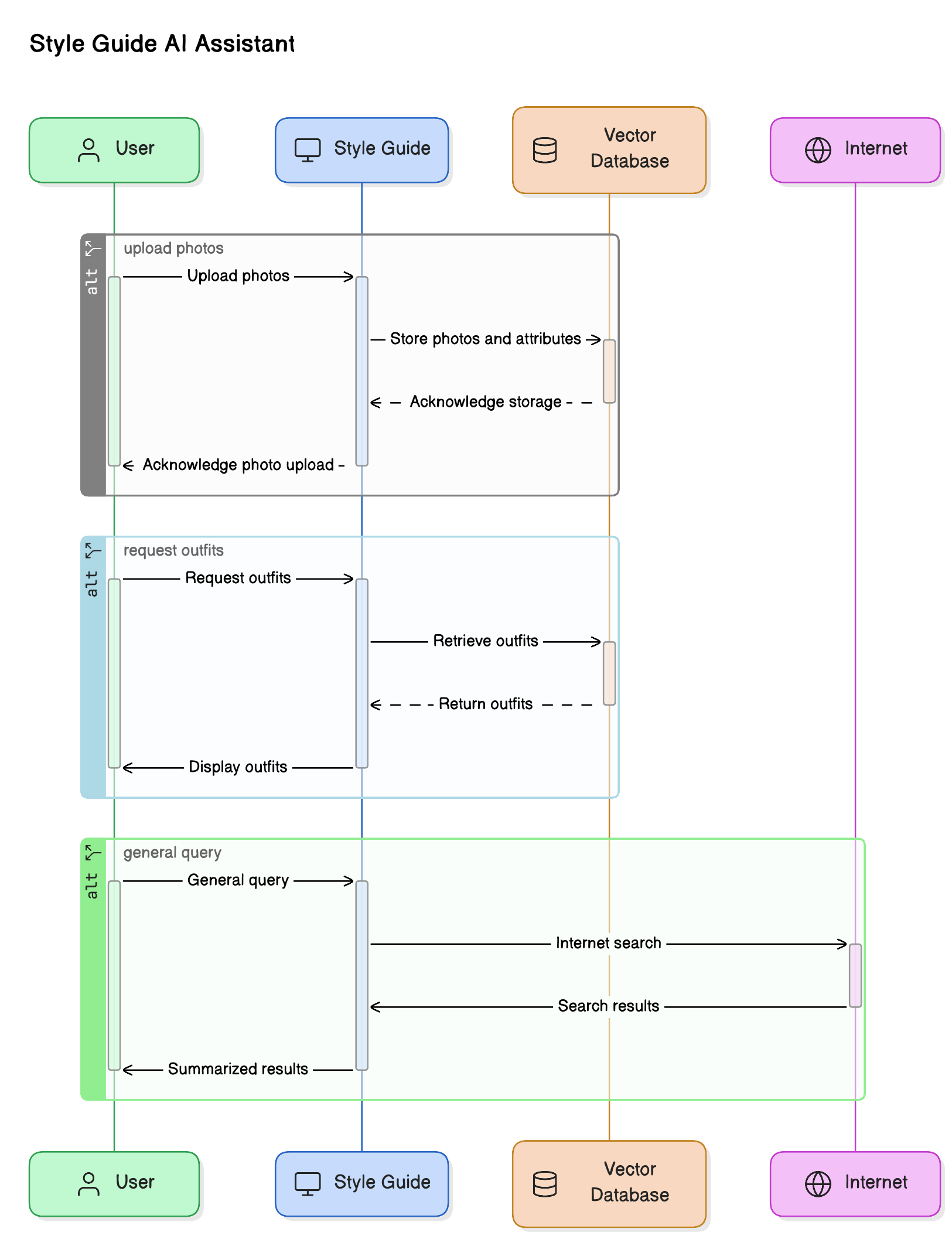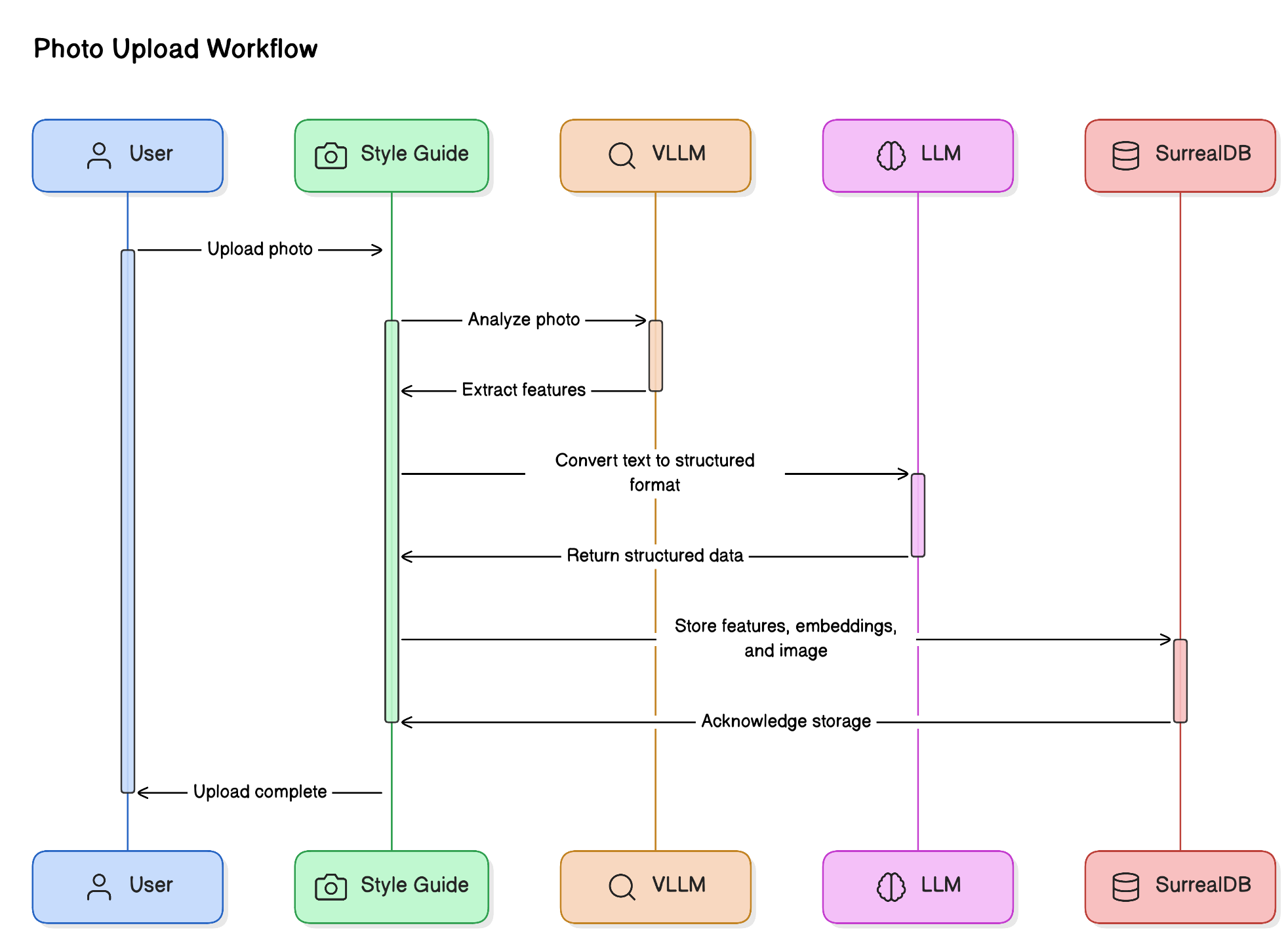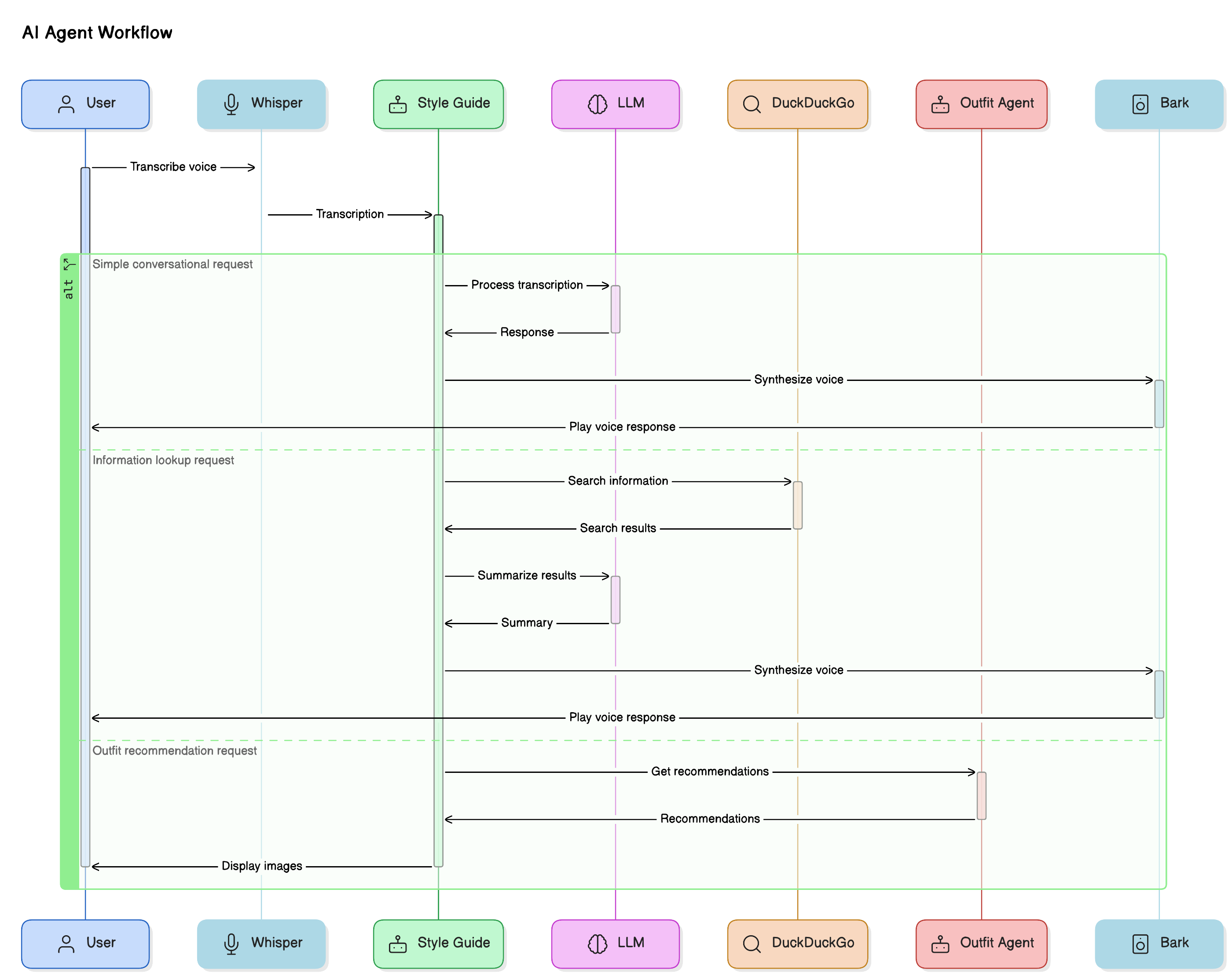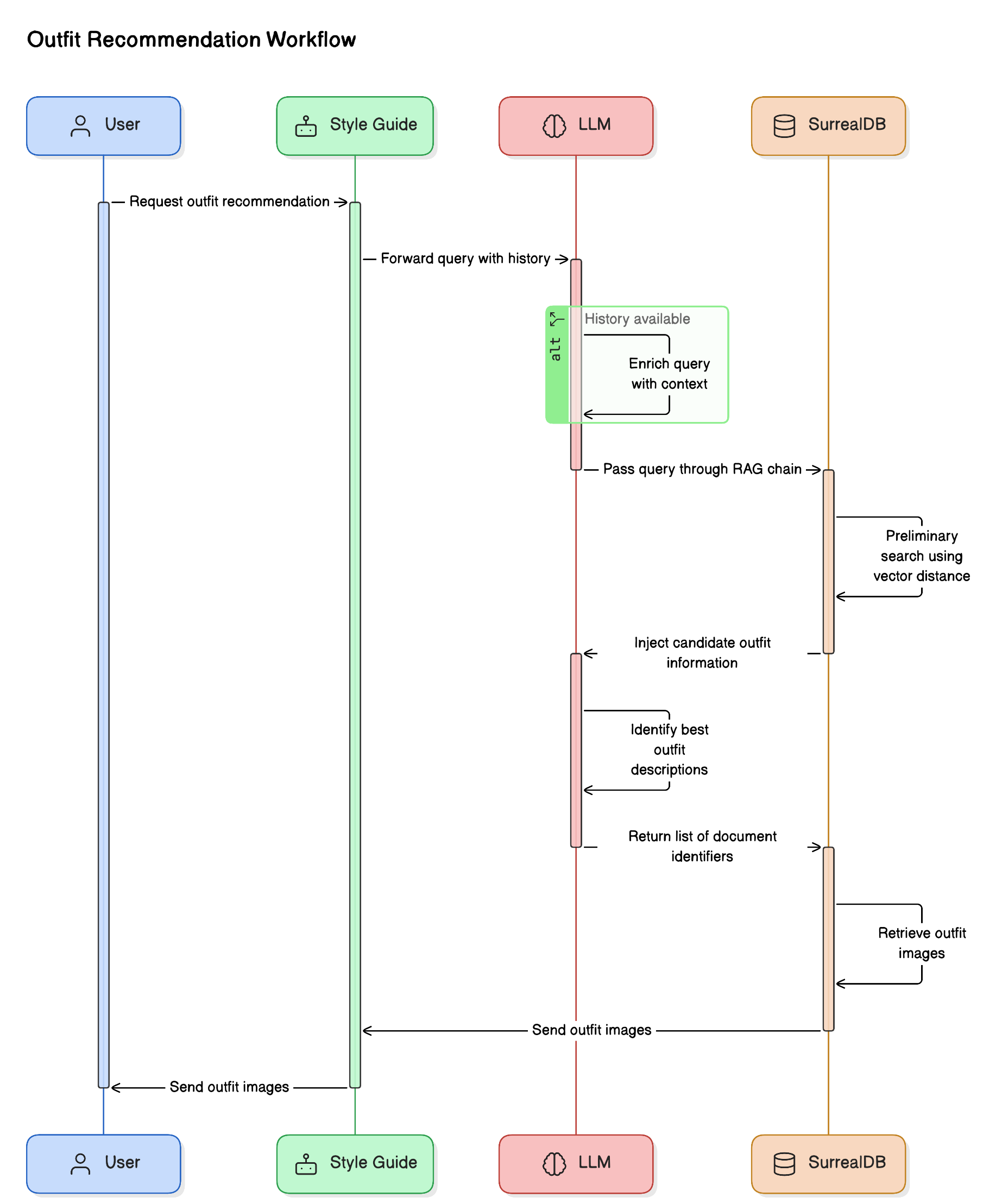Style Guide is a voice enabled AI assistant that lets you talk to your wardrobe.
When you upload your photos, it analyzes them and identifies the kind of clothes you are wearing and other interesting
attributes, like color, style, etc., and stores them along with your photo in a vector database.
You can then ask Style Guide to show you cloths matching a certain criteria, like:
- Show me casual wear
- Show me formal wear
- Show me blue shirts
- I am going on a vacation to the Mediterranean. Suggest some outfits to pack.
Style Guide will find up to 4 outfits for that criteria and display the photos to you.
Style Guide can also connect to the Internet and look up information like local weather, events, etc., for you and share that information with you in its voice. Furthermore, any information it pulls from the Internet, it can use as additional context when looking up outfits.
Is it a sunny day outside? Maybe go with bright-colored outfits. Is it cloudy? How about some darker shades?
- Speech to text is using OpenAI's open source Whisper mini model.
- Text to Audio is using Suno's open source Bark small model.
- WebRTC scaffolding from WebRTC AI Voice Chat project.
- Hosted AI Inference NVIDIA Inference Microservice (NIM):
- Text-to-text LLM meta/llama3-8b-instruct
- Image-to-text VLLM microsoft/phi-3-vision-128k-instruct
- Retrieval Embeddings nvidia/embed-qa-4
- Document and Vector store database SurrealDB
- Web Search using DuckDuckGo
- GenAI framework LangChain
- GenAI API calls monitoring and tracing LangSmith from LangChain
- Uploaded photos are first analyzed using the
phi-3-vision-128k-instructVLLM. - The plain text information extracted from the photo is then passed through
llama3-8b-instructLLM model with atool callingwrapper to convert the plain text information into structured format for easy feature extraction. - The extracted features, along with their
embedding vectorsand the original image are then stored within theSurrealDBdatabase.
- User's voice is first transcribed using
Whisperand the transcription is passed to the AI Agent. - The Agent has access to
llama3-8b-instructLLM for language model tasks and two tools:- Internet search using
DuckDuckGo - Outfit recommendation system
- Internet search using
- Simple conversational requests are usually handled by the LLM itself.
- Information lookup requests, like weather information etc., are handled by the Internet search tool.
- Requests related to outfits lookup are handled by the Outfit recommendation system.
- Large text responses, especially from the web search, are also summarized by the LLM before sending the response to the user.
- Finally, if the generated response is text, then a voice response is synthesized and played back to the user.
- If the response is a list of images, then they are displayed within the chat interface.
- The AI Agent directs all outfit related queries to the Outfit Recommender tool along with the history of any past conversations until that point.
- If conversational history is available, then the query is further enriched by extracting additional context from it.
- The query is then passed through a retrieval augmented generation (RAG) chain backed by the vector database as the retrieval source.
- The retrieval source injects information about candidate outfits by doing a preliminary search by employing a vector distance metric, like cosine similarity between the embeddings of the user query and the embeddings for the outfit descriptions stored within the vector database.
- The LLM then attempts to identify which of the retrieved outfit descriptions best meets the criteria specified in the user's query and returns a list of document identifiers.
- The document identifiers are then passed back into the vector database to retrieve the outfit images which are then handed over to the AI Agent which it later sends to the user.
- Ensure you have Python 3.12.
python --version Python 3.12.4 - You will need the following API Keys:
- Personal Key from your organization's profile on https://ngc.nvidia.com/ is needed to make API calls to the hosted NIM endpoints.
- Optionally, API Key from https://smith.langchain.com for LangSmith tracing.
SurealDBinstallation instructions can be found here: https://surrealdb.com/install- Download the source code and create a python virtual environment in the project's source folder.
python -m venv .venv source .venv/bin/activate - Download python package dependencies for the project.
pip install -r requirements - Create a
.envfile with the following entries.LANGCHAIN_API_KEY=<LangChain API Key for LangSmith> # Optional LANGCHAIN_TRACING_V2=false # true to enable LangSmith tracing. API KEY is needed for this. LANGCHAIN_PROJECT="<Project name for LangSmith tracing>" NVIDIA_API_KEY=<NVIDIA API KEY to access NGC Catalog> NVIDIA_LLM_MODEL=meta/llama3-8b-instruct # Can be another JSON capable LLM hosted on NIM NVIDIA_VLLM_MODEL=microsoft/phi-3-vision-128k-instruct # Can be another suitable VLLM hosted on NIM NVIDIA_EMBEDDINGS_MODEL=NV-Embed-QA # Can be another embedding model hosted on NIM - Start the server.
python -m server ======== Running on http://0.0.0.0:8080 ======== (Press CTRL+C to quit) - The application can now be accessed from your browser by visiting http://localhost:8080




